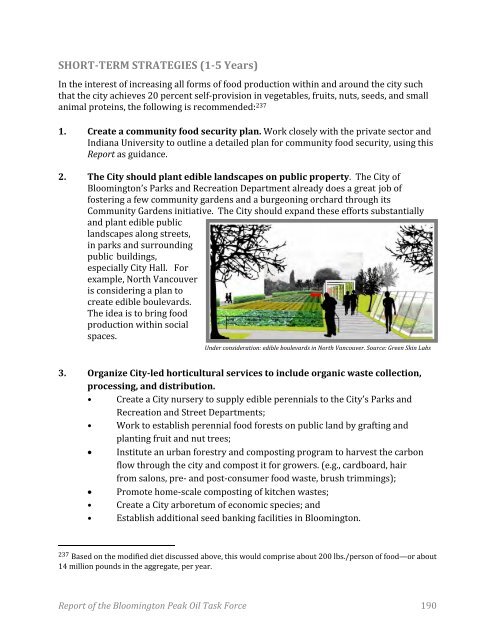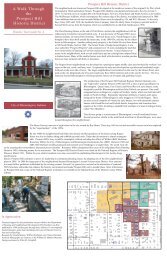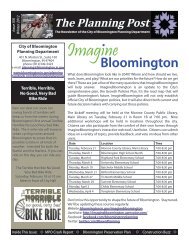Peak Oil Task Force Report - City of Bloomington - State of Indiana
Peak Oil Task Force Report - City of Bloomington - State of Indiana
Peak Oil Task Force Report - City of Bloomington - State of Indiana
You also want an ePaper? Increase the reach of your titles
YUMPU automatically turns print PDFs into web optimized ePapers that Google loves.
SHORTTERM STRATEGIES (15 Years)<br />
In the interest <strong>of</strong> increasing all forms <strong>of</strong> food production within and around the city such<br />
that the city achieves 20 percent self‐provision in vegetables, fruits, nuts, seeds, and small<br />
animal proteins, the following is recommended: 237<br />
1. Create a community food security plan. Work closely with the private sector and<br />
<strong>Indiana</strong> University to outline a detailed plan for community food security, using this<br />
<strong>Report</strong> as guidance.<br />
2. The <strong>City</strong> should plant edible landscapes on public property. The <strong>City</strong> <strong>of</strong><br />
<strong>Bloomington</strong>’s Parks and Recreation Department already does a great job <strong>of</strong><br />
fostering a few community gardens and a burgeoning orchard through its<br />
Community Gardens initiative. The <strong>City</strong> should expand these efforts substantially<br />
and plant edible public<br />
landscapes along streets,<br />
in parks and surrounding<br />
public buildings,<br />
especially <strong>City</strong> Hall. For<br />
example, North Vancouver<br />
is considering a plan to<br />
create edible boulevards.<br />
The idea is to bring food<br />
production within social<br />
spaces.<br />
Under consideration: edible boulevards in North Vancouver. Source: Green Skin Labs<br />
3. Organize <strong>City</strong>led horticultural services to include organic waste collection,<br />
processing, and distribution.<br />
• Create a <strong>City</strong> nursery to supply edible perennials to the <strong>City</strong>’s Parks and<br />
Recreation and Street Departments;<br />
• Work to establish perennial food forests on public land by grafting and<br />
planting fruit and nut trees;<br />
• Institute an urban forestry and composting program to harvest the carbon<br />
flow through the city and compost it for growers. (e.g., cardboard, hair<br />
from salons, pre‐ and post‐consumer food waste, brush trimmings);<br />
• Promote home‐scale composting <strong>of</strong> kitchen wastes;<br />
• Create a <strong>City</strong> arboretum <strong>of</strong> economic species; and<br />
• Establish additional seed banking facilities in <strong>Bloomington</strong>.<br />
237 Based on the modified diet discussed above, this would comprise about 200 lbs./person <strong>of</strong> food—or about<br />
14 million pounds in the aggregate, per year.<br />
<strong>Report</strong> <strong>of</strong> the <strong>Bloomington</strong> <strong>Peak</strong> <strong>Oil</strong> <strong>Task</strong> <strong>Force</strong> 190









